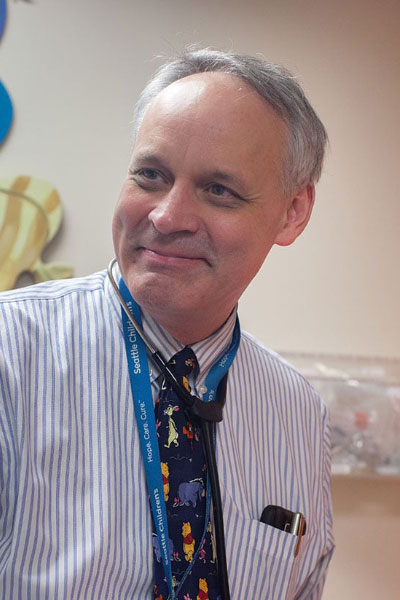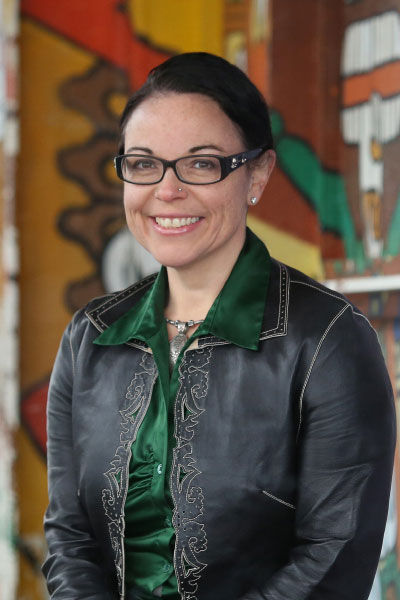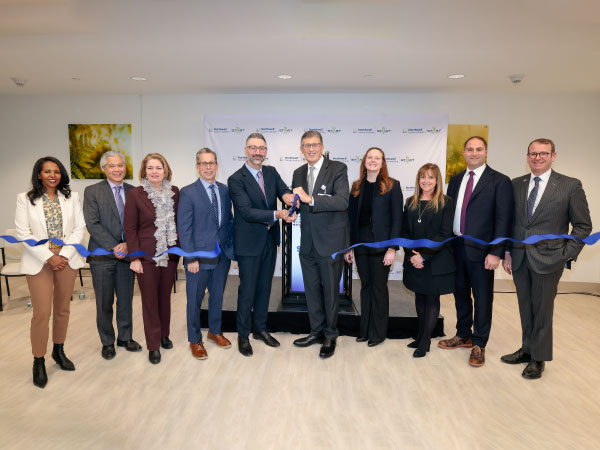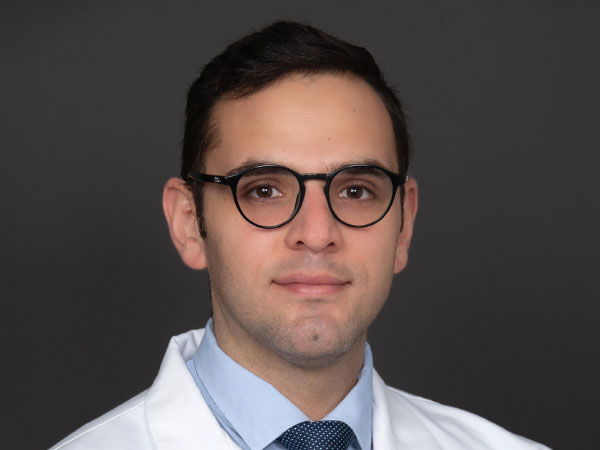Drug manufacturers and researchers have a moral obligation to design clinical trials that adequately represent the target population for the investigational agent—and these medical products need to be safe and effective for everyone, leading clinical trial experts in oncology say.
“Because we strongly believe that the best oncology treatment is often treatment within a clinical trial, we also owe it to all patients to ensure that all have that benefit available to them,” said Charles Blanke, group chair of SWOG Cancer Research Network.
As FDA expands its commitment to improve health equity in drug development and sets its sights on defining “adequate representation” of minorities in clinical trials, The Cancer Letter has invited leaders of cooperative groups, which form NCI’s National Clinical Trials Network, to reflect on the state of diversity in the translational research pipeline.
“If participants in a clinical trial don’t represent the overall population, that calls into question the generalizability of the results,” said Douglas Hawkins, group chair of Children’s Oncology Group.
A discussion of FDA’s new Project Equity appears here, accompanied by an in-depth conversation here with the program’s lead, Lola Fashoyin-Aje, a deputy division director in FDA’s Office of Oncologic Diseases and associate director of the Science & Policy Program to Address Disparities at the agency’s Oncology Center of Excellence.
“It should be expected that the FDA consider the trial participation in their review of trials and data,” said Melissa Simon, chair of the Health Equity Committee at ECOG-ACRIN Cancer Research Group. “There should be a statement up front about diversity goals for a particular trial—whether pediatric or adult.”
Blanke, Hawkins, and Simon spoke with Matthew Ong, associate editor of The Cancer Letter.
Matthew Ong: Why is diversity in clinical trials and drug development important?
Also, what are some common barriers that investigators, both in academia and industry, run into when seeking to diversify their trials?
Charles Blanke, SWOG: If results of trials are to be generalizable in a given disease, the trial population needs to reflect, as much as possible, the entire population of patients with the disease.
Thus, we need a broad swath of participants.
In addition, we also need to make sure we can find and report study results for individual subgroups of patients and know that the results for these subgroups are reliable and applicable.
Beyond that, as a publicly-funded group, SWOG has a greater ethical obligation to conduct trials that benefit everyone. Because we strongly believe that the best oncology treatment is often treatment within a clinical trial, we also owe it to all patients to ensure that all have that benefit available to them.
There are so many [barriers]! A major challenge is finding clinical sites that have access to diverse populations. The cooperative groups have an advantage here—tens of thousands of member participants and the full integration of community-based sites through the NCI’s Community Oncology Research Program (NCORP) and Minority/Underserved-NCORP programs.
But there are other barriers that we believe are real and must be addressed:
- Patients’ attitudes regarding clinical trials, including a frequent lack of trust in the healthcare system and in doctors, with a concern that doctors are just out to benefit themselves or “the system.”
- Physicians’ attitudes, including physician assumptions—often unfounded, given the available data—that certain patients won’t be able to manage participating in a trial.
- Structural issues include:
- A lack of adequate insurance to cover the costs of participation.
- Inability to manage co-pays, even if patients do have insurance.
- Not having the extra time often needed to take part in a trial, due to such things as job requirements and child care needs.
- A lack of physical access to the trial—it doesn’t matter if we have the best drugs if patients can’t get to the clinic to be treated with those drugs, because they don’t have a ride.
Douglas Hawkins, COG: Diversity in pediatric clinical trials and drug development is essential for multiple reasons.
First, some of the most promising new treatments for pediatric cancer are only available through clinical trials. There is an issue of equity if selected populations do not have access to clinical trials that have the prospect for direct benefit to children with cancer.
Second, we generalize the results from clinical trials to the overall population. If participants in a clinical trial don’t represent the overall population, that calls into question the generalizability of the results.
The barriers to diversity in clinical trial enrollment are multiple and significant, but likely mirror the barriers to health care access in general.
Because most pediatric oncology centers are part of larger pediatric medical centers, often, patient access to specialty care and clinical trials is better than for adults.
Melissa Simon, ECOG-ACRIN: Diverse representation is needed in clinical trials and drug development. The inputs into a trial, especially those who participate, are essential to ensuring results of a trial that are applicable to diverse populations.
For instance, if a trial focuses on COVID vaccine efficacy, and the intent is to develop a vaccine that is safe and efficacious for all populations, then it behooves the investigators to ensure that those who participate in the trial represent populations of people who will ultimately receive the vaccine.
There is deep mistrust in research. Science has mistreated and abused persons of color, especially in this country. Tuskegee, Henrietta Lacks, and the contraceptive trials in Puerto Rico are some of the many examples. Scientists have unfortunately earned the distrust of many from participating in trials, and scientists have to work hard to earn trust back.
So, first and foremost, investigators need to bridge trust with diverse populations to increase diverse participation in trials. This requires a variety of approaches including humility, and community engagement with community partners, ensuring that the clinical trials team is diverse, ensuring there are no out-of-pocket costs or other large barriers to participation in a trial, etc.
What is the state of diversity in oncology trials, in academia and in private industry?
Also, from your experience, what efforts are being undertaken to increase representation in both spheres?
Blanke, SWOG: I think the state of diversity in oncology trials is somewhere in between. It’s something we’ve been trying to improve throughout my whole career, and it’s a major part of every grant application.
We did VERY poorly in the past, but have begun to make some progress.
There’s a perception that certain patients won’t go on trials, such as patients in some underrepresented groups, but we’ve done research that shows that’s just not true.
Charles Blanke
This problem is now getting increasing recognition, and we’re putting plans in place that do stand to make a difference.
There’s a perception that certain patients won’t go on trials, such as patients in some underrepresented groups, but we’ve done research that shows that’s just not true, and that when they are offered trials they will enroll at the same rates as other groups of patients.
You ask about the academic and industry spheres, but I think the dichotomy when it comes to diversity in cancer trials is more one of publicly funded versus privately funded trials.
Our research has shown that the state of diversity is significantly better in publicly-funded, NCI-sponsored trials than in privately-funded trials, although there’s clearly still a need for improvement.
Per FDA and NCI guidance to prospectively develop a plan to ensure diverse enrollment to trials, each cooperative group is coming up with its own plan.
SWOG has developed a detailed methodology for increasing representativeness of its trials and is now in the stages of training members in the use of it. I know all the other [NCTN] network groups are doing the same.
There should be a statement up front about diversity goals for a particular trial—whether pediatric or adult. It should be expected that the FDA consider the trial participation in their review of trials and data.
Melissa Simon
We’ve funded a DEI Fellow to provide guidance on implementing this methodology and have sponsored six DEI champions to work with specific research committees and study teams to apply evidence-based strategies, during trial development and conduct, to diversify participant populations.
We’ve also formed a search committee to fill a new leadership position in the group—vice chair for diversity, equity, and inclusion.
But even if they weren’t requiring steps to ensure diverse enrollment, it’s morally incumbent on us to do it anyway.
Hawkins, COG: A recently published analysis of Children’s Oncology Group clinical trial enrollments from 2004-2015 (Faulk KE, Anderson-Mellies A, Cockburn M, Green AL (2020), Assessment of enrollment characteristics for Children’s Oncology Group (COG) upfront therapeutic clinical trials 2004-2015. PLoS ONE 15(4): e0230824) concluded that “enrollment was grossly proportional across races and ethnicities as well as socioeconomic groups.
This finding highlights the accessibility of COG trials to U.S. patients and suggests that patients enrolled to COG trials are generally representative of the overall pediatric and AYA cancer population with regard to race/ethnicity and socioeconomic status.”
The authors noted areas of under-enrollment, including among Native Americans and Alaskan Natives, as well as Black children 0-9 years with hematologic malignancies.
The broad COG network, with approximately 200 institutions geographically distributed across the U.S., increases the chance for diverse study enrollment, yet highlights areas for continuous improvement.
Simon, ECOG-ACRIN: Diverse participation is not great across the board, some research teams are doing better than others. In general, it is pretty dismal and we have a long way to go.
FDA has confirmed that the Best Pharmaceuticals for Children Act of 2002 indeed gives the agency the authority to enforce diverse enrollment in some pediatric trials.
Should the agency use this authority, and find a way to extend the authority to adult trials?
Is this politically and logistically feasible?
Hawkins, COG: If the FDA did use this authority, it may have some impact on studies with investigational agents. However, there are more complexities than simply exercising the authority.
Simon, ECOG-ACRIN: Diverse enrollment and more importantly representation should be strong in every trial.
There should be a statement up front about diversity goals for a particular trial—whether pediatric or adult. This should not only include racial/ethnic diversity, but sex/gender diversity, age diversity and etc., where appropriate.
Even many trials to this day do not have an appropriate balance of males and females to study important sex differences in response to certain therapies and treatments.
OCE’s Dr. Lola Fashoyin-Aje said that investigators tend to be concerned about the “risks” of enrolling heterogeneous cohorts, when the community should instead “shift” into thinking about the value and benefits of diverse enrollment.
What’s your take on this? And what can investigators in industry and academia do to increase representation of traditionally underserved populations in trials?
Blanke, SWOG: I don’t believe this risk is real anymore, although it used to be.
For all of the reasons I’ve discussed above, we have to think about diverse enrollment, and the cooperative groups have been focused on the value and benefits of it for a long time now.
There is an issue of equity if selected populations do not have access to clinical trials that have the prospect for direct benefit to children with cancer.
Douglas Hawkins
Our efforts to increase representation of traditionally underserved populations in our trials start early in trial development.
We’re working on ways to develop preliminary forecasts of subpopulation enrollment based on more than just the history of who we’ve enrolled in the past.
We try to identify needs for extra funding for reaching and recruiting subpopulations to make sure all groups have access to the trial.
We also review eligibility criteria for their impact on enrollment of subgroups and may have to relax some criteria—for example, age criteria to ensure older patients are enrolled as well.
We poll a diverse set of patient advocates to make sure the trial is attractive and reasonable.
Hawkins, COG: COG feels that diversity in enrollment is inherently valuable, as outlined above. Our studies should be intentionally designed to minimize barriers to enrollment and made as broadly available to all populations.
Also, the pediatric oncology community needs to increase the diversity of its members to ensure that every group has a voice and a representative in the field.
Simon, ECOG-ACRIN: There is without doubt substantial benefit to diverse participation in trials—the data will ultimately be more representative of and applicable to all populations.
Given the USA’s evolving demography to be more diverse over the next two decades, it behooves FDA and clinical trials efforts to prioritize diversity and inclusion in all trials.
This will take thoughtful intentionality and true partnered approaches to build trust with communities who have been traditionally excluded from research or abused by research in the past.
What is FDA’s role here, and what expectations, if any, do you have for FDA on this issue?
Hawkins, COG: COG works closely with the FDA to advance the care of children with cancer. FDA has a number of pediatric oncology trained physicians whose insight is highly valuable.
Simon, ECOG-ACRIN: It should be expected that the FDA consider the trial participation in their review of trials and data.
Other comments, thoughts?
Blanke, SWOG: Thanks for the chance to contribute to this discussion. It’s a critical one to have!
Simon, ECOG-ACRIN: A diverse scientific workforce also would better support improved diversity, equity and inclusion in trials.












